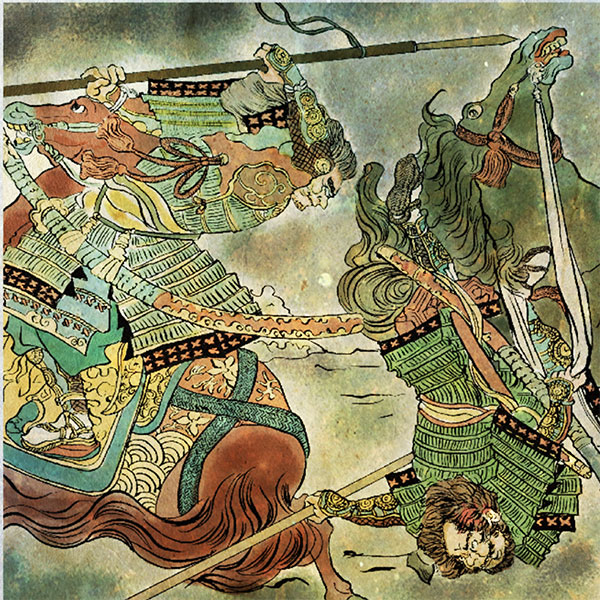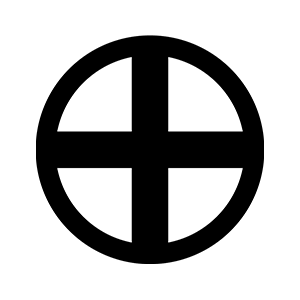- Satsuma domainA leading figure of the Meiji Restoration
- The Satsuma domain was ruled by the Shimazu clan throughout the Edo period. The Shimazu clan is a clan that has continued to fight to control all of Kyushu ever since its founder, Tadahisa Shimazu, was appointed the head of Shimazu Manor by Minamoto no Yoritomo during the Kamakura period. Yutaka

Kagoshima CastleKagoshima City, Kagoshima Prefecture
- spring
- summer
- autumn
- winter
- TOP
- Kyushu
- Kagoshima prefecture
- Kagoshima Castle
| Other name | Tsurumaru Castle |
|---|---|
| castle construction | 1602 |
| address | 7-2 Shiroyamacho, Kagoshima City, Kagoshima Prefecture |
- Access to Kagoshima Castle
- Approximately 10 minutes walk from Shiyakusho-mae tram station.
HISTORYKagoshima Castle, also known as Tsurumaru Castle, was the residence of the Shimazu clan.
Kagoshima Castle is a Hirayama Castle located in Shiroyama-cho, Kagoshima City, Kagoshima Prefecture. The castle was built by Tadatsune Shimazu in 1601, the year after the Battle of Sekigahara. Because the shape of the house resembles a crane spreading its wings, it is also known as Tsurumaru Castle. Let's unravel the history of Kagoshima Castle, which continued to be the domain office of the Satsuma domain throughout the Edo period.
- History up to the construction of Kagoshima Castle
- During the Nanbokucho period, the Kamiyama clan, which ruled the entire Kagoshima district at the time, built castles called ``Uenoyama Castle'' and ``Kamiyama Castle.'' Afterwards, the castle was handed over to the Shimazu clan, which had grown in power while concurrently serving as the guardian of Satsuma, Osumi, and Hyuga since being appointed by Minamoto no Yoritomo as the head of Shimazu Manor in the early Kamakura period. The history of the Ueyama clan is still not known in detail, and there is a theory that they moved to the Sakurajima area after leaving Kagoshima County. On the other hand, the Shimazu clan expanded its power from the Muromachi period, and in the Sengoku period, it expelled the Ito clan, which was the feudal lord of Hyuga, and unified the three states of Satsuma, Osumi, and Hyuga provinces as the Sengoku daimyo, making it the largest in Kyushu. Grow into a daimyo. During the Azuchi-Momoyama period, the Shimazu clan received an increase of 50,000 koku (koku) after being relieved of their territory by the Toyotomi government for their remarkable military exploits in the Korean War. As a result, the Shimazu clan's territory totaled 610,000 yen, making it the fifth largest territory after the Tokugawa clan, Uesugi clan, and Mori clan. In the Battle of Sekigahara that broke out in 1600 after the death of Toyotomi Hideyoshi, the 17th head of the family, Yoshihiro Shimazu, sided with the Western army, but the 16th head of the Shimazu family, Yoshihisa Shimazu, who was the supreme leader of the Shimazu family, fought against the Tokugawa clan. He held post-war negotiations with Ieyasu for three years and was able to get him to grant relief to all of his territories. In this way, the Shimazu clan was incorporated into the Shogunate system as the ``Satsuma Domain'' following Tokugawa Ieyasu. Kagoshima Castle was built by Tadatsune Shimazu, the son of Yoshihiro Shimazu, in this political situation.
- Kagoshima Castle in the Edo period
- Kagoshima Castle was built as a residence for a feudal lord, second only to the Kaga clan, with a total cost of 770,000 koku, but high-rise buildings such as a castle tower and high stone walls were not built. Tadatsune Shimazu, who built Kagoshima Castle, lives in a house built at the eastern foot of Shiroyama. There is an opinion that the reason for building such a castle was to visually demonstrate the intention of obedience to the shogunate. However, in exchange, the Satsuma domain left medieval-style mountain castles in various locations, and created a unique system called the outer castle system, in which 113 sections were each guarded by vassals. With a system like this, you can feel safe even if the castle's defenses are weak. When completed, Kagoshima Castle had a simple house-style structure with the Honmaru to the north and the Ninomaru to the south, and there were problems with its defense. For this reason, it is said that Shiroyama, which is the mountain behind the castle, was used as a ``back-filling castle'' for siege. In the early Edo period, a castle was established here, but gradually it became a sacred area where entry was prohibited. Shiroyama was also the site of the final battle of the Seinan War, and there is a cave halfway up the mountain where Saigo Takamori is said to have barricaded himself for a month. This cave can still be visited from the outside.
Kagoshima is a disaster-prone area, and due to the tropical climate's hot and humid climate, termite damage is severe, and buildings were rebuilt many times throughout the Edo period. Furthermore, during the Satsuma-British War that broke out at the end of the Edo period, the palace's deficiencies in defense were exposed, with several shells being fired into the inner palace from British warships. On the other hand, due to the simplicity of Kagoshima Castle, the British army did not think it was a domain office, and some unusual incidents have occurred, such as attacking a temple, mistaking it for a castle tower. - Kagoshima Castle after the Meiji era
- Even after the Edo shogunate fell, the Meiji government was established, and the abolition of domains and prefectures took place, until around 1873, the main gate turret gate called ``Miroumon'' and the one-story, two-story armory gate turret remained open. , a corner turret (sumi-yagura), and a Shoin-zukuri palace. However, most of the buildings were destroyed in a fire in 1874, and were not rebuilt until the Heisei era. After 1901, the castle ruins were used as the school site for the Seventh High School Zoshikan, and after the war, Kagoshima Prefectural University School of Medicine and Kagoshima National University School of Medicine Basic Classroom were built. Today, the remains of Kagoshima Castle include the stone walls and moat, the ruins of Demaru, the former site of Saigo Takamori's private school, and the stone bridge that spans the bridge between it and the Otemon Gate. The Kagoshima Prefectural History Center Reimeikan was built on the site of the Honmaru, and the Kagoshima Prefectural Library, Kagoshima City Museum of Art, and Kagoshima Prefectural Museum were built on the Ninomaru site, making it a center of culture. In addition, it was selected as one of Japan's top 100 castles in 2006. In 2020, the Otemon Main Gate was restored over a period of five years and opened to the public. Today, Kagoshima Castle Ruins is an indispensable sightseeing spot for those who love the end of the Edo period, and is visited by many people every year.
Read about incidents related to Kagoshima Castle
Read biographies related to Kagoshima Castle
- Yoshihisa ShimazuCommander-in-chief of the three states
- During the Sengoku period, wars broke out in many places, mainly in the Kinki region where the capital was located. Meanwhile, someone emerges who has won the war and taken control of the region. These include the Hojo family in Kanto, the Mori family in China, the Date family in Tohoku, and the Chosokabe family in Shikoku. Similarly, in Kyushu, there is no need to unify the region.

History of the Satsuma domain, whose domain was Kagoshima Castle
| Domain office | Kagoshima Castle |
|---|---|
| old area | Shiroyama foothills, Kagoshima district, Satsuma province |
| stone height | 569,000 koku |
| Fudai/Tozama | Foreigner |
| main lord | Shimazu family |
| Estimated population | 622,365 people (Kaei 5th year) |














